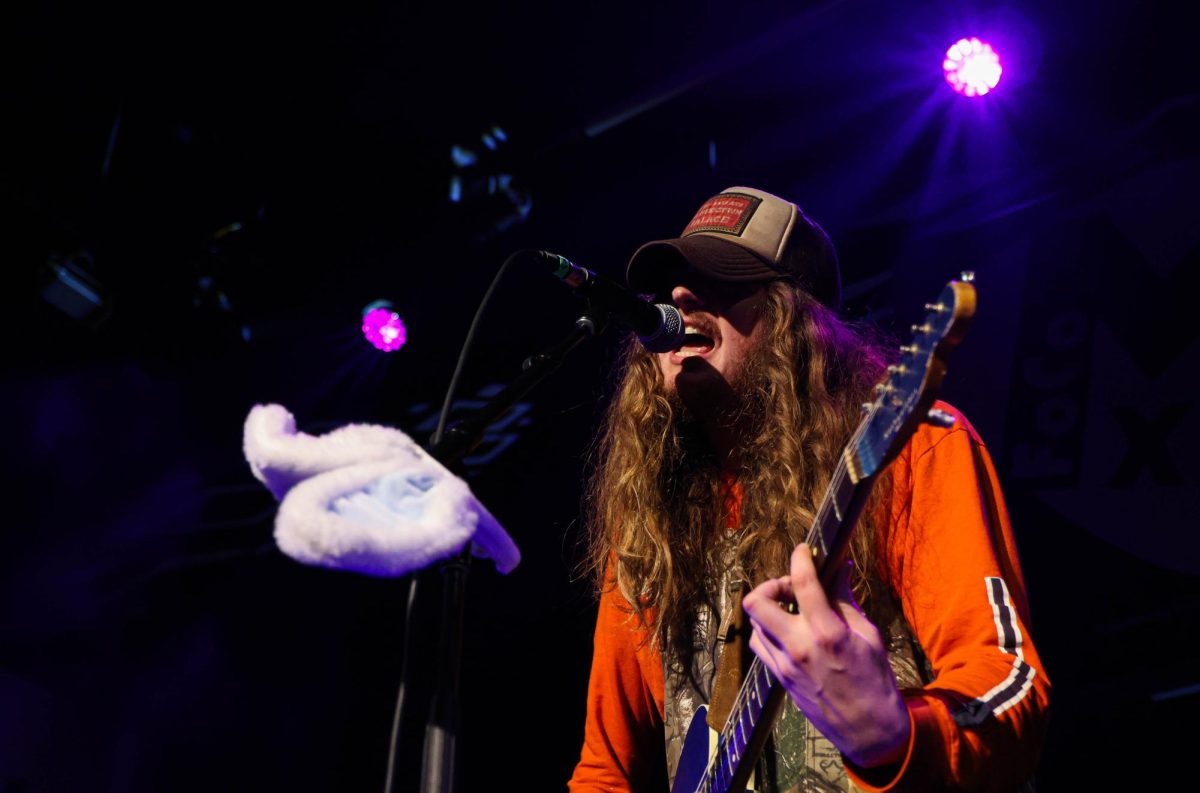Pulitzer prize winner Héctor Tobar spoke about his book “Deep Down Dark” at the Hilton Friday night.

Tobar has contributed to The New York Times, LA Weekly and has held several positions at The Los Angeles Times, including contributing to their 1992 Pulitzer Prize-winning coverage of the Rodney King Riots. Tobar, in addition to journalistic contributions, has also written two novels. He currently works as a professor for the University of Oregon’s School of Journalism and Communication.
Tobar’s book, “Deep Down Dark,” illustrates the experiences of 33 miners who were trapped 2,100 feet underground following the collapse of a gold and copper mine near Copiapó, Chile on August 10, 2010. Tobar describes the mine as Swiss cheese, with numerous holes created underground for digging. After the 21-story mine shaft collapsed the miners were trapped for 17 days with only about 100 packets of cookies to eat amongst all 33 men. Each man was allotted one cookie each every two days after some of the men consumed more than their designated rations during the first few days after the cave-in.
Finally, when the men were on the verge of starvation, rescue teams from the surface drilled through the boulder trapping them. Even though the miners were found they could not be extracted for 69 days. While in the mine they had access to newspapers, televisions and magazines.
The miners watched themselves become a worldwide story while still trapped 2,100 feet underground. While down there the men made a pact, agreeing they would only allow one book and one film to be made about their experience. After the men were extracted they went to Santiago, Chile and met with a legal team to discuss who should write the book. They wanted the story to be done right, maintaining artistic integrity and legitimacy. They needed a novelist with journalism experience who spoke Spanish. Tobar, while working for The Los Angeles Times, was the National Latino Affairs Correspondent which made him the natural choice to tackle the project.
Throughout the event Tobar spoke about how he approached telling the story. He emphasized his desire to paint a complete portrait of the men he was portraying in contrast with the previously impersonal pieces on the mine collapse. Tobar’s determination to truly understand these men allowed him to dive deeper into the human condition of the story and allowed him to write a more accurate and holistic rendition.
Tobar characterized his writing as superbly human and intimately nurtured. He found poetry in these men and it was his wish to illustrate this that makes the book much more immersive and meaningful than the snapshot delivered by other journalists.
“I came because I read the book and I loved it,” said Bethany O’Brien, an event attendee. “I heard about it on Colorado Public Radio and then read it and I absolutely loved it. I saw a poster for the event and recognized the name and thought it would be great to hear from him in person.”
Attendees of the even not only included fans of Tobar but also students directed by their English professors.
Tirzah Post, an English major at CSU, said the event was recommended by English teachers and was incentivized with receive extra credit.
Among the fans was Amy Borngrebe, describing the captivating nature of Tabor’s writing.
“I think for me it was how Tobar told the story,” Borngrebe said. “Although he is writing in a journalistic way, it’s so vivid. You feel like you’re right there with these miners. I think that for me I was so in the story while I was reading it and that is why I liked it.”
CSU is planning to have another writer speak about their work soon. Anne Lamott will be at the Hilton at 7 p.m. on April 12.








